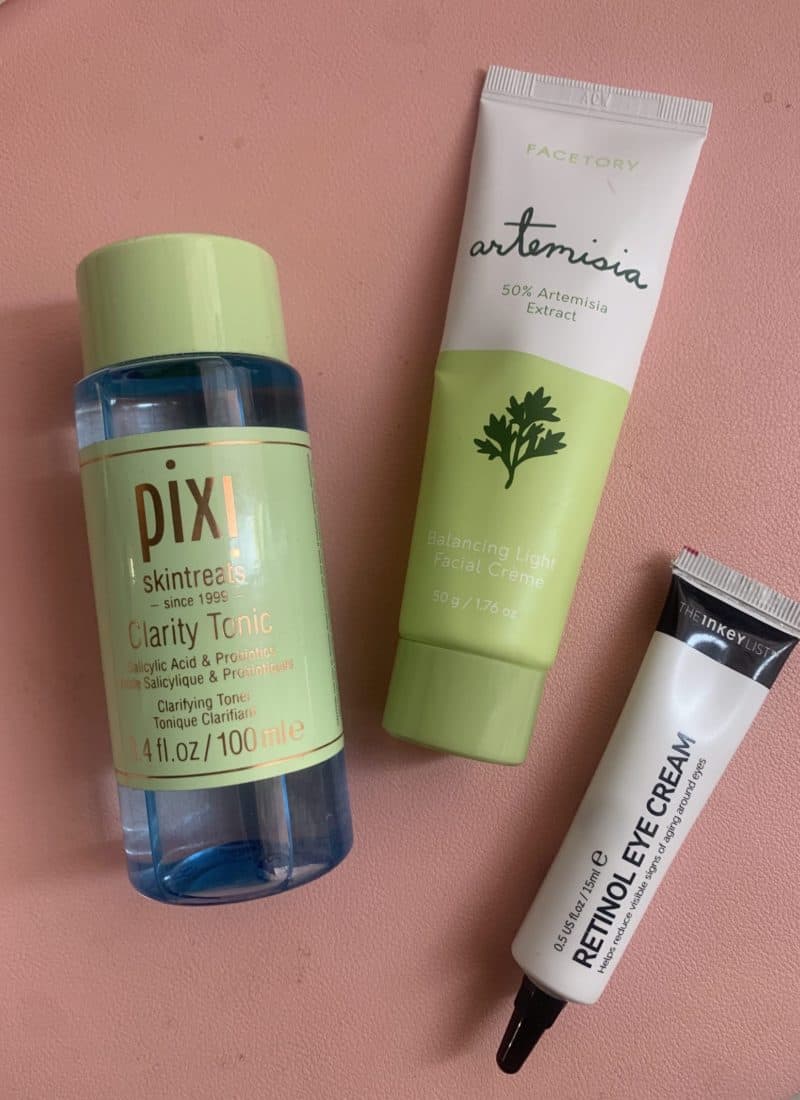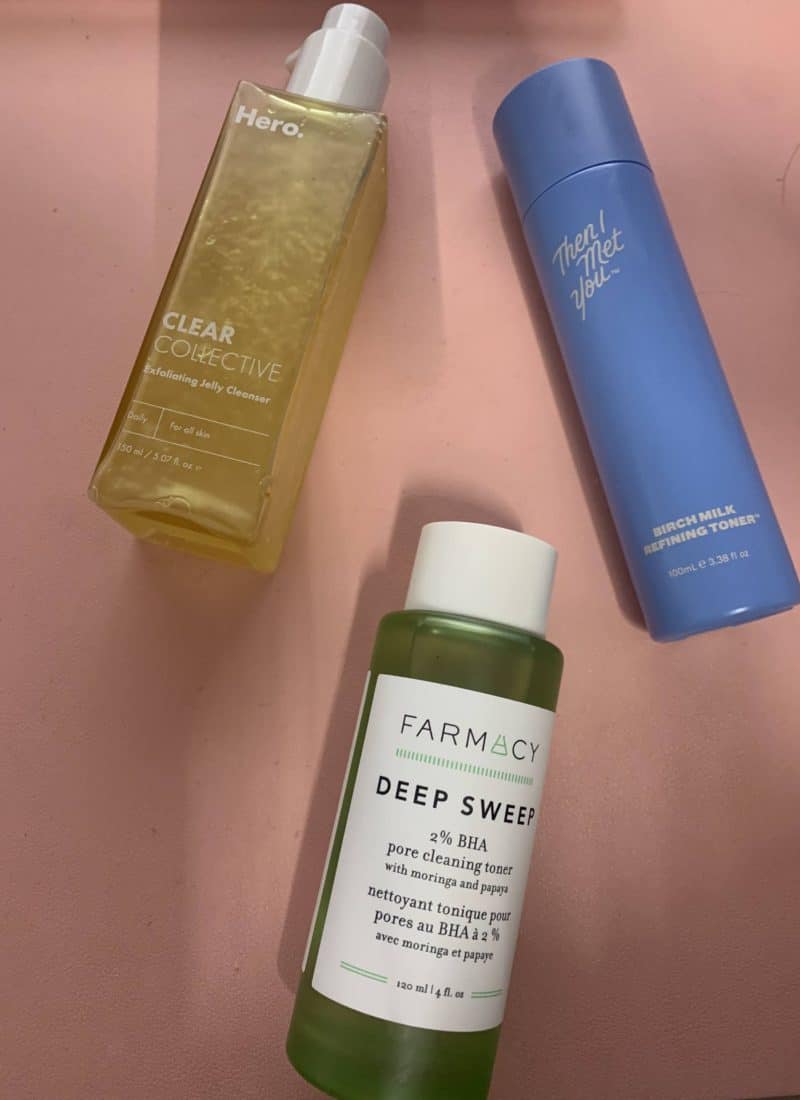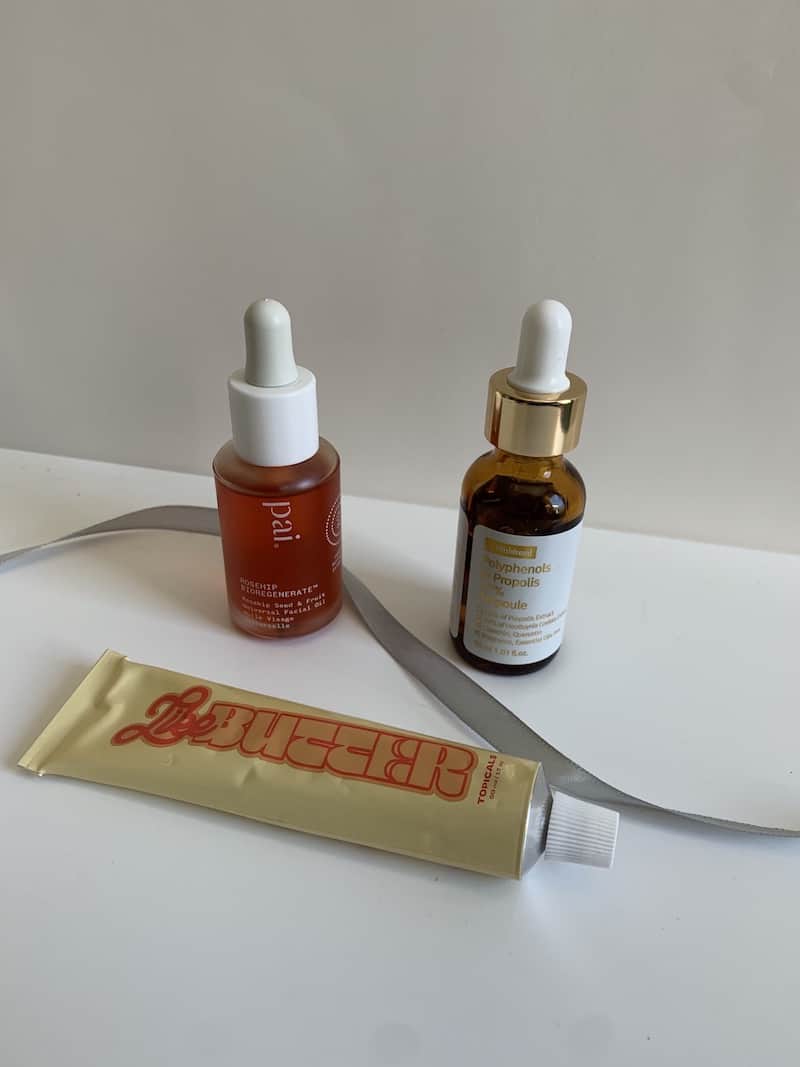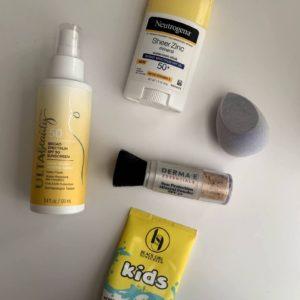After your breakouts heal, are you left with red or purplish marks on your skin? This is likely PIE – otherwise known as post inflammatory erythema. I know it can be confusing to differentiate between the types of acne scars and hyperpigmentation. So today I’m breaking down what PIE is and how you can treat it.
What is Post Inflammatory Erythema (PIE)?
Post inflammatory erythema appears as red or purple-colored marks on the skin, typically left behind after breakouts. Pimples cause inflammation, which can leave behind red marks on the skin because of damage or dilation to your blood vessels/capillaries. You may also get PIE from other inflammatory skin conditions like dermatitis or sunburns.
PIE is most common in lighter skin tones, and PIH (Post Inflammatory Hyperpigmentation) is more common in melanin-rich skin. PIE can be exasperated from picking or popping pimples, so try to resist the urge to touch your breakouts! If you can’t help popping your pimples, I recommend using a product like the Hero Cosmetics Rescue Balm to help speed up the healing process and minimize PIE.
How to treat Post Inflammatory Erythema (PIE)?
Now that you know what post inflammatory erythema is, here’s how to treat it. It’s important to keep your skin barrier strong, calm inflammation in your skin, and use skin brighteners or gentle actives to help fade the redness. PIE typically takes about 6 months to fade, depending on the severity, but properly treating it can help. There are some amazing products and ingredients you can use to help treat PIE.
Here are four tips and product recommendations:
1. Keep your skin barrier strong
Incorporate ingredients like niacinamide, ceramides, and oils rich in fatty acids (like rosehip). Using barrier-strengthening products can help prevent new PIE from forming, and existing PIE from worsening.
Product Recommendations: Stratia Liquid Gold, Topicals Like Butter, Pai Rosehip BioRegenerate Oil
2. Calm and soothe inflammation
Ingredients like centella and mugwort are naturally anti-inflammatory and can help calm redness in the skin. Pairing anti-inflammatory ingredients with skin brighteners or gentle actives can help speed up the healing process with PIE.
Product Recommendations: Purito Centella Serum, I’m From Mugwort Essence & Mugwort Cream
3. Incorporate skin brighteners or gentle actives
Be gentle when adding active products to your routine to avoid further inflammation in the skin. Ingredients like tranexamic acid, azelaic acid, vitamin c, and retinoids can help treat PIE.
Product Recommendations: Topicals Faded, Drmtlgy Vitamin C Serum, Prescription Tretinoin
4. Be diligent with your SPF
Using sunscreen daily is crucial to prevent your post inflammatory erythema from worsening. Whether you use a chemical or physical sunscreen is up to you, but be sure to use it everyday and reapply regularly when outdoors.
Product Recommendations: Drmtlgy Tinted SPF 46, Cetaphil Sheer Mineral Liquid SPF 50, Klenskin SPF 50
In-Clinic Treatments
PIE will fade with time, but if you have more stubborn spots or would like to see faster results, you could try in-clinic treatments. Laser treatments are very commonly used to treat PIE. I would recommend consulting with a dermatologist and asking about pulsed dye lasers or intense pulsed light. These laser treatments work by targeting damaged blood vessels to reduce inflammation and redness.
So there you have it! I know post inflammatory erythema can be frustrating, especially since it can take months to fade, but hopefully these tips can help. Remember to be gentle with your skin and avoid further inflammation to keep your skin strong and healthy. Be patient with your skin – PIE will definitely fade with time!
Certain product links are affiliate links. I do earn a small commission if you purchase from these links (with no additional cost to you), which supports me and my blog. Feel free to check out all of my affiliate/referral links or shop my favorites if you decide to shop. Thank you for your support!




This is so helpful as always! I typically suffer from PIE around my jawline where I consistently get breakouts and pick at them. Thank you for the tips 🙂
Thank you so much Tara! I’m so bad with picking too
Great points Annie! Thank you for sharing 🙂
So glad it was helpful!